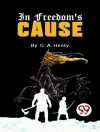In ‘The Christmas Miracle, ‘ Mary Noailles Murfree weaves a poignant narrative that explores themes of redemption and hope during the holiday season. Set against the backdrop of the American South, this work encapsulates the regional literary style that Murfree is known for, characterized by rich dialect, vivid descriptions, and deeply drawn characters. The story unfolds in a manner that reflects the social dynamics and cultural nuances of her time, blending realism with elements of sentimentalism that engage the reader’s emotions and moral sensibilities. Mary Noailles Murfree, often regarded as the first Southern woman novelist, was inspired by her upbringing in the Smoky Mountains, which profoundly influenced her literary voice. Her experiences of the rural landscape and the complexities of Southern life served as a foundation for her writings. Murfree’s deep empathy for the struggles of ordinary individuals, coupled with her Christian worldview, propelled her to create stories that reflect both the trials and the miracles that define the human experience, particularly during the festive season. ‘The Christmas Miracle’ is highly recommended for readers seeking a reflective and heartwarming tale that transcends time and place. Its exploration of human resilience and the spirit of generosity makes it a perfect read for the holiday season, inviting contemplation and engendering a sense of community among its audience.
About the author
Mary Noailles Murfree (1850-1922), an American fiction writer renowned for her novels and stories set in the Tennessee mountains, published under the pseudonym Charles Egbert Craddock. Born in Murfreesboro, Tennessee, Murfree developed an affinity for the local landscape and culture, which would become a significant element in her literary work. A graduate of the Chegary Institute, Murfree defied contemporary expectations of women by venturing into the domain of literature, often dominated by men in her era. Her literary style is marked by a vivid portrayal of mountain life, integrating dialect and detailed character studies, which has both fascinated and frustrated critics and readers alike (Wilson, 1939; Fisher, 1956). With a literary career spanning over four decades, Murfree penned numerous works; however, ‘The Christmas Miracle’ is only an attributive representation of her extensive oeuvre. Other prominent works include ‘In the Tennessee Mountains’ (1884), ‘The Prophet of the Great Smoky Mountains’ (1885), and ‘The Story of Keedon Bluffs’ (1887). Her narratives are celebrated for their exploration of the nuanced dynamics of isolation, nature, and human resilience. Despite the initial deception about her identity, Murfree’s real persona was received with acceptance when her pseudonym was disclosed, and her contributions have since been acknowledged as a part of the local color movement in American literature (Aronson, 1983).












